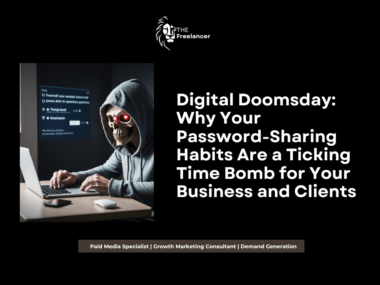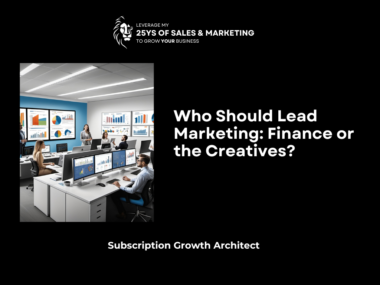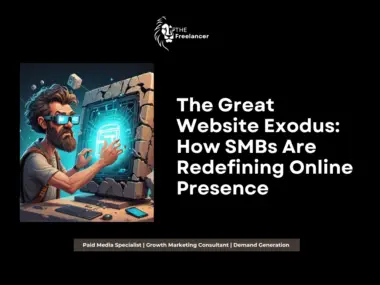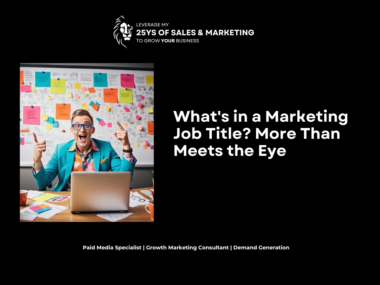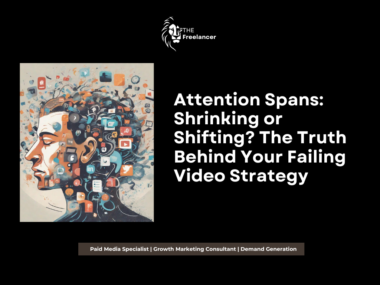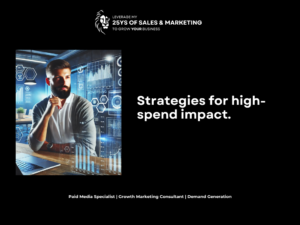So, you’re thinking of hiring a marketing whiz to boost your business. Great! But before you start interviewing candidates who throw around terms like “CPC,” “CTR,” and “ROI” faster than a caffeinated auctioneer, let’s dive into the world of marketing metrics. We’re not just going to skim the surface here; we’re going deep-sea diving into the ocean of data that drives modern marketing decisions.
Buckle up, because we’re about to embark on a journey that will take you beyond the basic jargon and into the intricate web of relationships between these metrics. By the end of this article, you’ll be able to separate the marketing maestros from the metric manipulators. Let’s get started!
1. The Holy Trinity: CPM, CPC, and CTR
Let’s start with the basics, but with a twist. We’re not just defining these terms; we’re exploring how they dance together in the grand ballet of digital advertising.
CPM (Cost Per Mille):
Definition: The cost per thousand impressions.
Real talk: This is like the cover charge at a club. You’re paying for eyeballs, not action.
CPC (Cost Per Click):
Definition: The cost you pay each time someone clicks on your ad.
Real talk: This is when someone actually decides your ad is interesting enough to investigate further. It’s like getting a phone number at that club.
CTR (Click-Through Rate):
Definition: The percentage of people who click on your ad after seeing it.
Real talk: This is your success rate at the club. How many phone numbers did you get compared to how many people you talked to?
The Relationship:
Here’s where it gets interesting. These three metrics are more interconnected than a family tree in a small town. If your CPM is high, it usually means you’re in a competitive market. Think of it as a trendy nightclub with a long line outside. This competition often drives up the CPC as well because more people are bidding for the same audience.
But here’s the kicker: a high CTR can actually lower your CPC over time. It’s like being so charming at the club that the bouncer starts letting you in for free. Platforms like Google and Facebook reward ads that people actually want to click on by charging less per click.
Humour Break: It’s like dating in the digital age. CPM is how many people swipe right on your profile, CPC is how many actually message you, and CTR is your success rate at turning those messages into actual dates. And just like dating, sometimes you have to spend more to stand out in a crowded field!
2. The Conversion Conundrum: CR and CPA
Now that we’ve got people clicking, let’s talk about getting them to commit. Enter the world of conversions.
CR (Conversion Rate):
Definition: The percentage of visitors who take a desired action on your site.
Real talk: This is like your closing rate at the club. How many phone numbers turned into actual dates?
CPA (Cost Per Acquisition):
Definition: The total cost of acquiring a new customer.
Real talk: This is how much you spent on those fancy drinks, Uber rides, and concert tickets before you could call someone your significant other.
The Relationship:
CR and CPA are like two sides of the same coin, and they’re heavily influenced by our previous metrics. A high CTR might get people to your site, but if your CR is low, you’re like a store with great window displays but terrible salespeople.
Your CPA is directly affected by your CPC and CR. If you’re paying a lot per click (high CPC) but not converting many of those clicks (low CR), your CPA will skyrocket faster than a SpaceX rocket. On the flip side, a high CR can offset a high CPC, keeping your CPA manageable.
Humour Break: Think of it like cooking. Your CTR is how many people smell your cooking and come to the kitchen. Your CR is how many actually eat the food. And your CPA? That’s how much you spent on ingredients for each person who didn’t spit it out. Bon appétit!
3. The ROI Riddle: ROAS and ROI
Now we’re getting to the meat and potatoes of marketing metrics. It’s time to talk about return on investment.
ROAS (Return on Ad Spend):
Definition: The revenue generated for every dollar spent on advertising.
Real talk: This is like counting how many dollars you found in your pockets after a night out compared to how much you spent.
ROI (Return on Investment):
Definition: The profit generated from an investment relative to its cost.
Real talk: This is like figuring out if that expensive suit you bought for job interviews actually landed you a higher-paying job.
The Relationship:
ROAS and ROI are cousins, but they’re not identical twins. ROAS is more focused on the immediate return from advertising spend, while ROI takes into account the bigger picture, including other costs like production and overhead.
A high ROAS doesn’t always mean a high ROI. You might be generating a lot of revenue from your ads (high ROAS), but if your product costs are through the roof, your ROI could still be in the basement.
These metrics are the culmination of all the others we’ve discussed. A low CPC and high CR will generally lead to a better ROAS, which in turn contributes to a higher ROI. But beware: chasing a high ROAS without considering ROI is like winning a pie-eating contest where the prize is more pie. You might be full, but are you really better off?
Humour Break: Calculating ROI in marketing is like trying to figure out if your gym membership was worth it. Sure, you’re spending less on new clothes because you’re in better shape (that’s your ROAS), but have you factored in the cost of protein shakes and that fancy fitness tracker? Welcome to the world of ROI!
4. The Engagement Enigma: Time on Site and Bounce Rate
We’ve talked about getting people to your site and getting them to convert, but what about what happens in between? Enter the world of engagement metrics.
Time on Site:
Definition: The average amount of time users spend on your website.
Real talk: This is like how long your date stays for coffee before making up an excuse about feeding their cat.
Bounce Rate:
Definition: The percentage of visitors who leave your site after viewing only one page.
Real talk: This is your “swipe left” rate in the digital world. They took one look and decided it wasn’t for them.
The Relationship:
These metrics are like oil and water – they don’t mix well. Generally, you want a high Time on Site and a low Bounce Rate. But here’s where it gets tricky: these metrics can be misleading if viewed in isolation.
A high Time on Site might seem great, but what if it’s because your website is confusing and people can’t find what they’re looking for? Conversely, a high Bounce Rate isn’t always bad. If you have a landing page designed to capture leads quickly, a high Bounce Rate might actually indicate efficiency.
These metrics also play into your overall conversion funnel. A low Bounce Rate and high Time on Site can lead to better CR, which in turn affects your CPA and ROI. It’s all connected, like a giant game of marketing Jenga.
Humour Break: Trying to lower your Bounce Rate is like trying to keep people at a party. Sure, you could lock the doors, but that’s probably not the best long-term strategy. Instead, maybe try better snacks (content) and more engaging conversation (user experience).
5. The Social Cipher: Reach, Impressions, and Engagement Rate
In the age of social media, these metrics have become the new currency of brand awareness and audience connection.
Reach:
Definition: The number of unique users who see your content.
Real talk: This is like how many people actually hear your joke at a party.
Impressions:
Definition: The total number of times your content is displayed.
Real talk: This is how many times you tell the joke, including to the same people who didn’t laugh the first time.
Engagement Rate:
Definition: The percentage of people who interact with your content (likes, comments, shares) compared to your reach.
Real talk: This is how many people actually laughed at your joke, or at least politely chuckled.
The Relationship:
These metrics are like the three musketeers of social media marketing. Reach gives you an idea of your potential audience size, Impressions tell you how often you’re getting in front of that audience, and Engagement Rate shows you how well your content resonates.
A high Reach with low Engagement Rate might mean you’re casting too wide a net. Conversely, a low Reach with high Engagement Rate could indicate you’ve found a niche audience that loves your content – great for building a community, but potentially limiting for growth.
These social metrics also play into your overall marketing strategy. High engagement on social media can lead to more organic traffic to your website, potentially lowering your CPC for paid campaigns. It’s all interconnected, like a marketing version of the butterfly effect.
Humour Break: Managing social media metrics is like trying to be popular in high school. Your Reach is how many people know your name, Impressions are how often you walk down the hallway, and Engagement Rate is how many people actually want to sit with you at lunch. Choose wisely!
Conclusion: The Metric Mastery
As we’ve seen, these marketing metrics are not isolated numbers on a dashboard. They’re interconnected threads in the grand tapestry of your marketing strategy. Understanding not just what these metrics mean, but how they relate to each other, is crucial for making informed decisions and optimizing your marketing efforts.
Remember, a good marketer knows the definitions, but a great marketer understands the relationships. They know that improving one metric can have a ripple effect across the entire marketing ecosystem. They’re not just looking at numbers; they’re telling a story with data.
So, the next time you’re interviewing a potential marketing hire, don’t just ask them to define CPC or CTR. Ask them how they would balance these metrics to achieve your business goals. Ask them to tell you a story about a time when improving one metric had unexpected effects on others.
And most importantly, remember that behind all these numbers are real people – your customers. At the end of the day, the most important metric is whether your marketing is genuinely connecting with and providing value to your audience.
Now go forth and conquer the world of marketing metrics! Just remember, if anyone tries to dazzle you with jargon without explaining the relationships, they might be all sizzle and no steak. And in the world of marketing, you need both the sizzle AND the steak to succeed.
Humour Break: Marketing metrics are like a game of Whack-A-Mole. Just when you think you’ve got one under control, another one pops up demanding attention. But hey, at least it’s more fun than doing your taxes!

